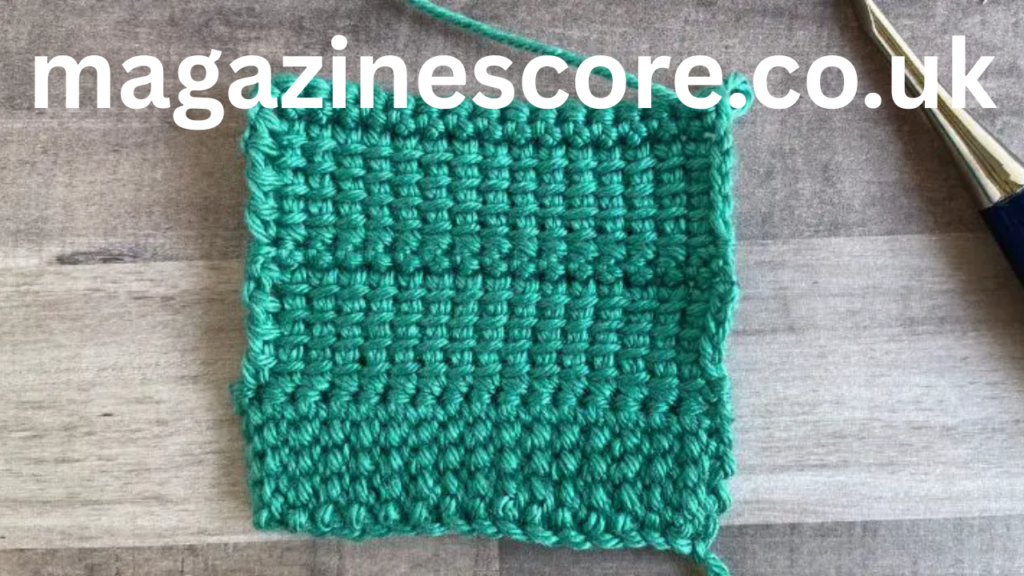Crochet is a timeless craft that blends creativity with functionality, allowing crafters to make everything from clothing and home decor to intricate lace and accessories. Among the many stitches in the crocheter’s toolkit, the treble crochet stitch—known for its height and versatility—stands out as a favorite for creating open, airy, and elegant fabric.
Whether you’re a beginner ready to expand your skills or a seasoned crocheter revisiting the classics, this comprehensive guide to treble croc het will deepen your understanding of the stitch, its uses, and how to integrate it into your own designs.
What Is Treble Crochet?
Treble croc het (abbreviated as tr in U.S. patterns) is one of the tallest basic crochet stitches. The word “treble” comes from the Latin “triplum,” meaning “triple,” referring to the three yarn-overs involved in the stitch’s execution. This stitch creates long, vertical bars with wide gaps between stitches, making it ideal for lightweight, drapey fabrics and lacy designs.
It’s important to note that U.K. terminology differs: in British patterns, the treble crochet in U.S. terms is called a double treble (dtr). Always check a pattern’s terminology before starting.
How to Work a Treble Croc het Stitch (U.S. Terms)
Here’s a step-by-step guide to working the treble croc het stitch:
- Yarn Over Twice: Start by wrapping the yarn around your hook two times.
- Insert Your Hook: Push the hook through the stitch where you want to place the treble croc het.
- Yarn Over and Pull Through: You’ll now have four loops on your hook.
- Yarn Over and Pull Through Two Loops: This reduces the loops on your hook to three.
- Yarn Over and Pull Through Two Loops Again: Now you’re down to two loops.
- Yarn Over and Pull Through Final Two Loops: One loop remains—your treble croc het is complete.
Each treble croc het adds significant height to your work, so rows of treble croc hets build quickly and look open and airy.
Why Use Treble Crochet?
Treble croc het is often used when a fabric needs to be:
- Lightweight
- Lacy
- Quick to produce
- Drapey or flowing
It’s perfect for scarves, shawls, summer tops, beach cover-ups, and decorative blankets. Because of its height, it also works well in textured patterns like shells and fans, and when used in combination with other stitches, it creates stunning visual contrast.
Treble Croc het vs. Other Stitches
Let’s compare treble croc het to a few other common stitches to better understand its role.
| Stitch | Yarn Overs | Loops Pulled Through | Height | Texture |
|---|---|---|---|---|
| Single Crochet (sc) | 0 | 1 | Short | Dense |
| Half Double Crochet (hdc) | 1 | 2 | Medium | Soft/Dense |
| Double Crochet (dc) | 1 | 3 | Tall | Slightly Open |
| Treble Croc het (tr) | 2 | 4 | Very Tall | Open and Lacy |
Because it stands taller than other basic stitches, treble crochet is excellent when you want to add vertical dimension or reduce the number of rows in a pattern.
Foundation Chain and Turning Chains
Each stitch in crochet has an associated height, and you need to account for that when starting rows.
- For treble croc het, you usually chain 4 at the beginning of a row to bring your hook up to the correct height.
- In foundation chains, the starting treble croc het row will typically begin in the fifth chain from the hook, because the first four chains count as your first treble croc het.
Being mindful of these chains ensures even edges and a clean finish.
Common Treble Croc het Patterns and Uses
Here are some of the most popular ways treble croc het is used in projects:
1. Lacy Shawls and Wraps
Because treble croc het creates such an open fabric, it’s perfect for breathable, elegant shawls. Working treble stitches in fan or shell motifs amplifies their decorative effect.
2. Decorative Afghans
Treble croc het can speed up blanket projects. When alternated with double or single crochet, it adds visual interest and texture. Think stripes, waves, or ripples.
3. Summer Wearables
Treble croc het garments are ideal for warm weather—think flowy tops, beach tunics, and skirts. You get the structure of yarn with the breathability of mesh.
4. Crochet Lace
When combined with chain spaces and skipped stitches, treble crochet can create stunning lace patterns that mimic vintage doilies or modern geometric designs.
Previous article; Breaking the Fourth Wall Even After the Movie Ends Deadpool post credit scene
5. Filet Crochet
This technique uses open (chain) and solid (treble croc het) blocks to create images or patterns—perfect for wall hangings or table runners.
Treble Croc het Variations
Want to get creative? There are plenty of variations to play with:
Front Post Treble Croc het (FPtr)
Worked around the front of a stitch post. Used to create raised cables or ribbing.
Back Post Treble Croc het (BPtr)
Worked around the back of a stitch post. This pairs well with FPtr to create texture.
Treble Croc het Two Together (tr2tog)
Used in shaping and decreasing. It joins two treble croc hets into one stitch.
Extended Treble Croc het (etr)
A taller and more elastic version where you add an extra yarn-over and pull-through loop sequence.
Tips for Mastering Treble Crochet
- Watch Your Tension: Because the stitch is tall, loose tension can create an uneven or unstable fabric.
- Count Carefully: It’s easy to lose count with such open stitches. Use stitch markers for larger projects.
- Blocking Matters: Treble croc het benefits from blocking, especially in lacy patterns. It helps define stitches and open up the design.
- Use Stitch Markers: Especially helpful when following complex lace patterns or working in the round.
- Choose the Right Yarn: Lighter yarns (cotton, linen, bamboo blends) show off the stitch detail best, but treble croc het can also look dramatic in chunky yarns for statement pieces.
Sample Treble Croc het Pattern: Lacy Treble Scarf
Materials:
- Worsted-weight yarn (approx. 200–250 yards)
- Crochet hook (Size H/5.0mm or as needed)
- Scissors and yarn needle
Treble Croc het in Modern Design
Modern crochet designers love treble croc het because it provides:
- Visual contrast with denser stitches
- Quick build-up for large projects
- A retro-modern vibe when combined with geometric patterns
- Versatility in both traditional and contemporary fashion
Treble crochet’s role in boho aesthetics, festival wear, and open summer cardigans has surged, proving that this “old” stitch still has fresh appeal.
Troubleshooting Treble Croc het
Even experienced crocheters run into issues. Here’s how to fix common problems:
Problem: Gaps Too Wide
Solution: Try using a smaller hook or tightening your tension slightly.
Problem: Uneven Edges
Solution: Be consistent with your turning chains, and ensure you’re not skipping or adding stitches at the edges.
Problem: Fabric Looks Too Loose
Solution: Treble croc het naturally creates a loose fabric, but yarn weight and hook size play big roles. Try switching to a DK or sport weight yarn for better structure.
History and Origins
While it’s difficult to pinpoint exactly when treble croc het entered the scene, it likely developed alongside other tall stitches during the 19th century, when crochet evolved from traditional lace-making techniques. The popularity of filet crochet, which relies heavily on treble stitches, surged in the early 20th century as both a utilitarian and decorative craft.
Conclusion
Treble crochet is more than just a tall stitch—it’s a gateway to lace, texture, and flow. Its elegance lies in its simplicity, and its power comes from how it transforms even basic yarn into something breathable, beautiful, and bold. Whether you’re crafting a lacy wrap for a summer evening or a chunky statement piece for a winter outfit, treble croc het will serve you well.
By mastering the treble croc het stitch, you open up a world of design options that span both classic and contemporary styles. So grab your yarn, hook up some height, and let your creativity soar—one tall stitch at a time.








